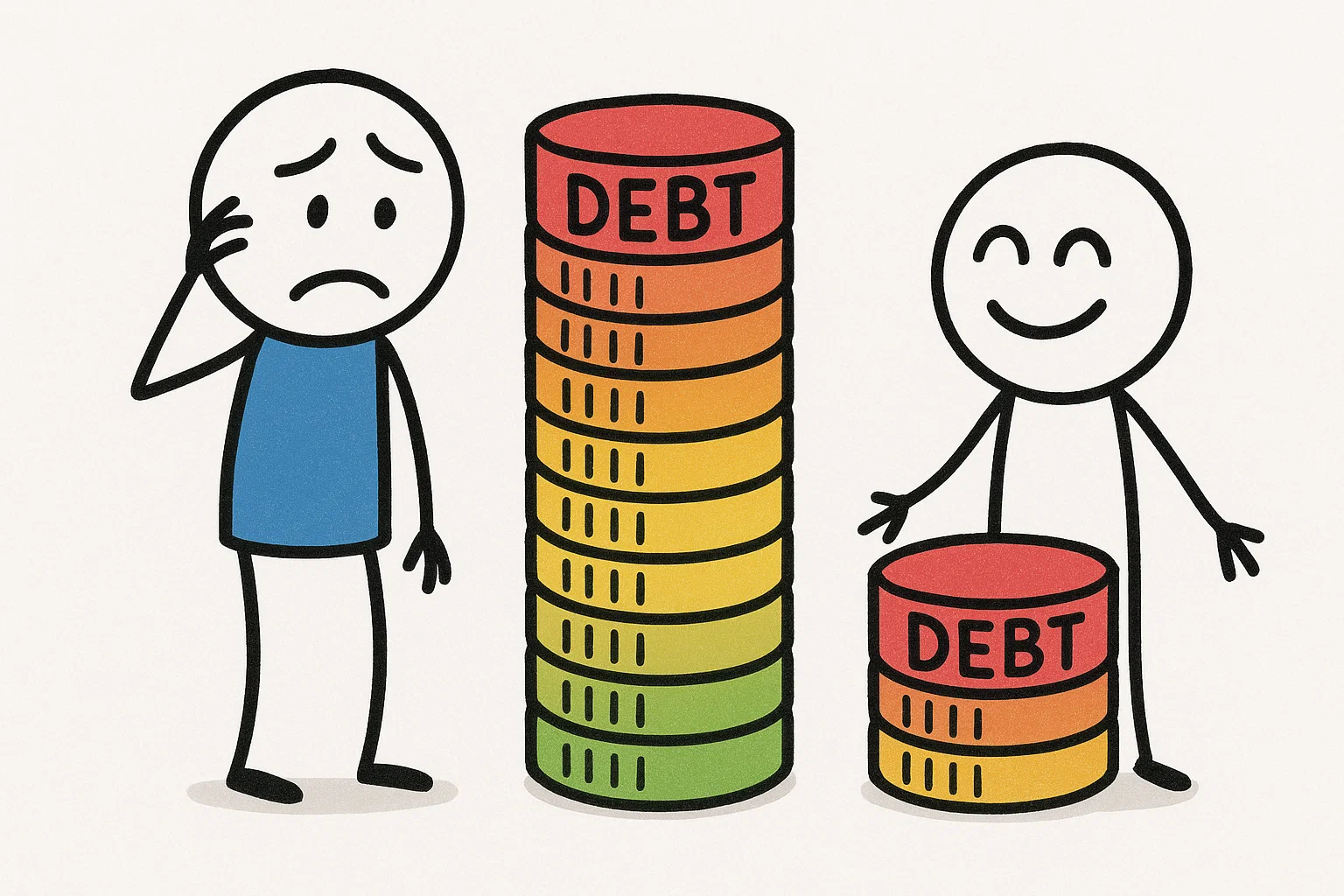“Priya,” Rohan began, reviewing his balance sheet. “My uncle, bless his heart, keeps telling me to avoid all debt, calling it a ‘burden.’ But I see other successful businesses taking on loans for expansion. There must be a difference, right? What exactly is strategic debt vs. bad debt, and how do I know if I’m engaging in healthy business leveraging for my growth in India?”
Priya smiled knowingly. “Rohan, your uncle’s caution is understandable, as unchecked debt can indeed be disastrous. However, the world of business finance distinguishes sharply between different types of borrowing. Understanding strategic debt vs. bad debt is absolutely fundamental for any entrepreneur aiming for sustainable growth. It’s the core of healthy business leveraging.”
Rohan looked intrigued. “So, debt can actually be good for a business?”
“Absolutely,” Priya affirmed. “When used wisely, debt can be a powerful accelerator, enabling you to seize opportunities, expand operations, and ultimately amplify shareholder value. It’s a critical ‘Smart Money Move’ for optimizing business finance in India.”
The Debt Spectrum: Good vs. Bad Borrowing
“How do I tell the difference between good debt and bad debt for my business?” Rohan asked.
Priya laid out the clear distinction:
Strategic Debt (Good Debt):
- Definition: “Debt taken to generate future revenue, increase efficiency, build assets, or improve the business’s long-term financial health. It’s an investment in growth.”
- Characteristics:
- Generates ROI: The return on investment (ROI) from using the borrowed money is significantly higher than the cost of borrowing (interest rate).
- Asset Creation/Value Addition: Funds are used to acquire revenue-generating assets (machinery, property), expand market reach, develop new products, or improve operational efficiency.
- Clear Repayment Plan: There’s a strong, predictable cash flow to comfortably service the debt.
- Enhances Competitive Edge: Enables the business to compete more effectively or capture new market share.
- Examples:
- Loan for purchasing new, more efficient machinery that boosts production capacity and lowers per-unit costs.
- Loan for expanding into a high-growth new market.
- Working capital loan to finance inventory for a confirmed, large order.
- Loan for acquiring a complementary business that expands your customer base.
Bad Debt:
- Definition: “Debt taken to cover operational inefficiencies, fund unsustainable growth, finance consumption (rather than investment), or simply survive a period of poor financial health. It’s a drain on resources.”
- Characteristics:
- No ROI or Negative ROI: The borrowed money doesn’t generate sufficient, if any, additional revenue or savings to cover its cost.
- Covers Losses/Inefficiencies: Used to pay for day-to-day expenses because cash flow is weak, or to keep a failing part of the business afloat.
- Unclear Repayment Plan: Repayment relies on uncertain future events or unsustainable growth rates.
- Increases Financial Strain: Adds to the existing burden without clear paths to offset it.
- Examples:
- Taking a loan to pay off another high-interest loan without addressing the root cause of financial struggles.
- Borrowing to cover consistently unprofitable operations.
- Taking on excessive debt for purely aesthetic office renovations that don’t drive revenue.
- Using short-term, high-interest loans for long-term capital needs.
Priya’s Playbook: Healthy Business Leveraging in India
“This distinction is vital! So, how do I ensure my business is using debt strategically for healthy business leveraging and optimizing business finance in India?” Rohan asked, ready for concrete steps.
Priya outlined her comprehensive playbook for smart business borrowing:
- Define the Purpose Clearly: “Before taking any debt, articulate precisely why you need the funds. Is it for a revenue-generating project, asset acquisition, or market expansion? If the answer isn’t clear and linked to growth, reconsider.”
- Smart Move: Create a detailed business plan for how the borrowed funds will be utilized and the projected ROI.
- Project Future Cash Flows Realistically: “Never borrow based on optimistic projections alone. Conduct thorough cash flow forecasting. Will your increased revenue/efficiency reliably cover the new EMI, even in a slightly downturned scenario?”
- Smart Move: Always have a buffer in your cash flow projections to account for unforeseen delays or expenses.
- Assess Your Debt-to-Equity Ratio: “This is a key metric. While debt can boost returns on equity, too much debt (high debt-to-equity ratio) increases financial risk and makes your business vulnerable. Lenders and investors scrutinize this.”
- Smart Move: Aim for a healthy balance. What’s ‘healthy’ varies by industry, but typically, a ratio below 1:1 or 2:1 is preferred, depending on your sector.
- Compare All Lending Options (Cost of Capital): “Don’t just jump at the first offer. Compare interest rates, processing fees, repayment terms, and any hidden charges across different lenders (banks, NBFCs, fintech platforms). A lower cost of capital makes debt more strategic.”
- Smart Move: Factor in the total cost of the loan over its entire tenure, not just the EMI.
- Match Loan Tenure to Asset Lifespan: “Borrow long-term for long-term assets (e.g., machinery) and short-term for working capital needs (e.g., inventory). Mismatching can create cash flow problems.”
- Smart Move: Avoid using short-term, high-interest debt to finance long-term fixed assets.
- Maintain a Strong Credit Profile: “Just like personal CIBIL, your business credit score (e.g., from Experian, CIBIL) impacts your borrowing power. Timely repayment of existing debts, transparent financials, and a healthy balance sheet are crucial.”
- Smart Move: Regularly review your business credit report for accuracy and areas of improvement.
- Consider Hybrid Financing: “Sometimes, a mix of debt and equity is the most effective approach. For instance, using equity for initial high-risk R&D and debt for scalable production.”
- Smart Move: Don’t assume debt is always cheaper or better than equity; it depends on the business stage and purpose.
“This framework completely changes how I view debt,” Rohan exclaimed. “It’s not something to fear, but something to analyze and leverage intelligently.”
“Precisely, Rohan!” Priya affirmed. “Understanding strategic debt vs. bad debt is a cornerstone of smart business finance in India. By applying these principles, you ensure your borrowing truly contributes to healthy business leveraging, paving the way for sustainable growth and long-term success without unnecessary financial burden.”
Is your business contemplating taking on debt but unsure if it’s a strategic move or a potential burden? Need expert guidance to differentiate strategic debt vs. bad debt and implement principles of healthy business leveraging? Visit 21degrees.in and let our seasoned financial advisory team help you analyze your financing needs, structure smart borrowing strategies, and optimize your overall business finance for sustainable growth.




